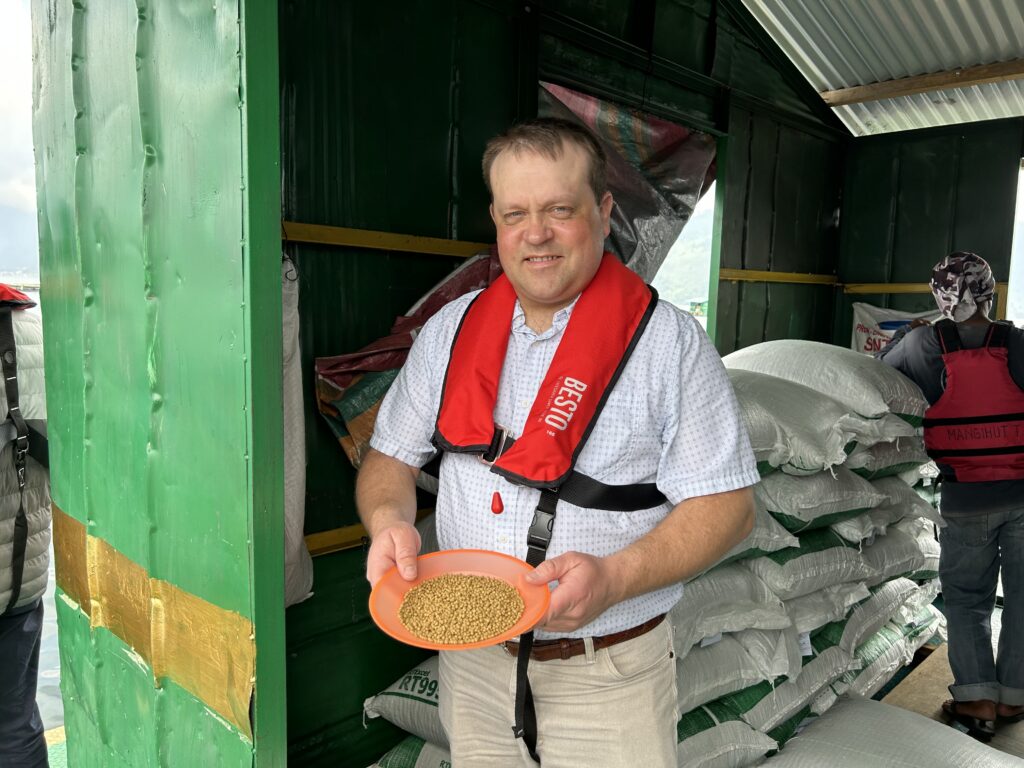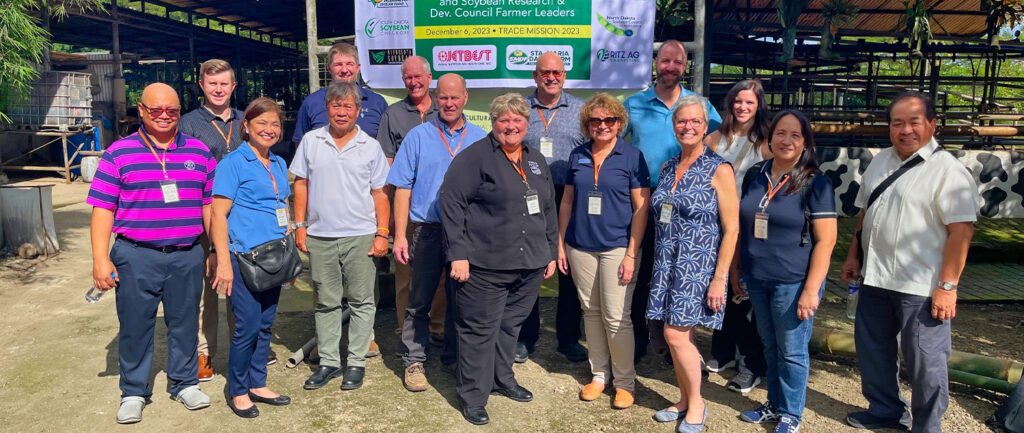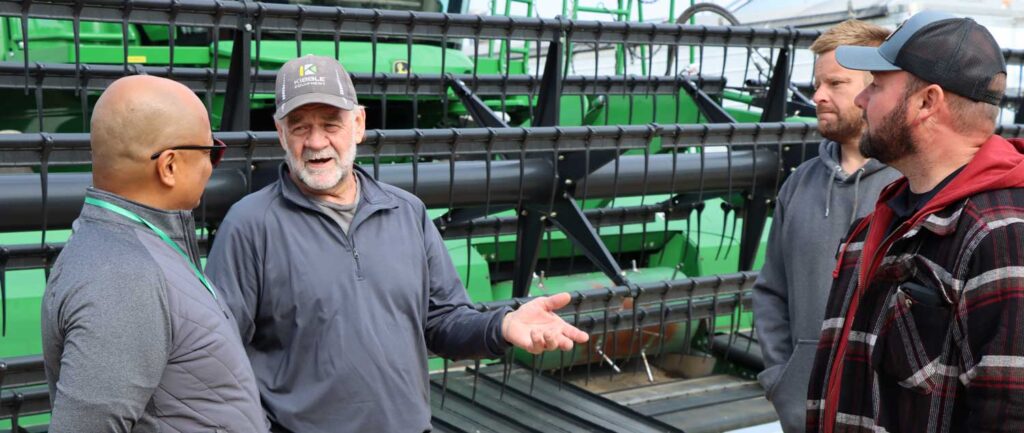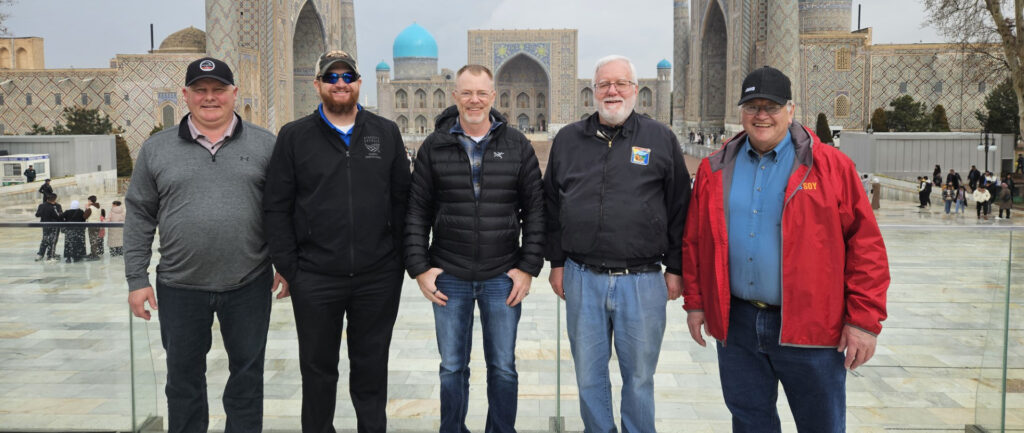Riding in a vehicle on the left-hand side of the road, watching hundreds of motor bikes whiz by in the tropical heat of Southeast Asia, Minnesota farmer Glen Groth and his Northern Soy Marketing (NSM) colleagues arrived ready in Indonesia ready to make an impact.
Returning to Indonesia just one year after their last visit, NSM was primed to continue its mission of educating potential customers about the benefits of soybeans exported from the Pacific Northwest (PNW), as well as expanding an existing market.
Groth, a board member with both NSM and the Minnesota Soybean Research & Promotion Council, was joined by NSM Treasurer/Secretary and Wisconsin Soybean Marketing Board Director Nancy Kavazanjian, along with University of Minnesota Researcher Seth Naeve and poultry nutrition consultant Robert Swick, on the trade mission.
“It’s important for farmers who come over here to ground truth these markets, actually hear from customers,” Groth said. “We’re not just taking somebody else’s word for it. We know where the checkoff dollars are being spent and where we’ve steered checkoff dollars towards investments.”
Throughout industry meetings, NSM continued delivering its message about the quality and availability of northern-grown soybeans.
A customer shared concerns about the level of crude protein in U.S. soybeans being lower when buyers test it, versus when the U.S. tests it. The U.S. and Indonesia use different methods to test the crude protein levels, which is creating the discrepancy.
NSM recognizes essential amino acids (EAA) as the most accurate way to determine soybean quality and promotes this value with potential customers. NSM invested grower checkoff funds to develop the system of measuring quality of northern-grown soybeans using Critical Amino Acid Value (CAAV) levels.
“It’s always good to meet the customer because they want to see the real person,” Kavazanjian said. “They want to know that we’re real people, who are doing the real thing and that we care as much about our product as they care about the product they buy from us. We need to continue to reinforce the idea that we know our products may be lower in crude protein, but we have a better amino acid profile.”
This is something that will need continued education going forward with these potential customers.
Hendri Chandra, CEO of Sahabat Ternak Jaya, is aware of the benefits of U.S. soybeans and is currently feeding 60% U.S. soybean meal to around 600,000 laying hens. During the “Understanding U.S. Soy Quality” seminar in Medan, Kavazanjian presented Chandra with the license agreement to use the Fed with Sustainable U.S. Soy label on the egg cartons his company sells. The group was also able to see his operation and the eggs before they are put into cartons of 10 each.
‘A learning perspective’
The group also toured the Regal Springs Tilapia Farm on Lake Toba. After a short safety briefing, the group loaded onto speed boats to see the tilapia cages. The soybean meal fed to the tilapia is 100% U.S.-sourced, but only accounts for about 10% of the tilapia’s diet.

The tilapia are grown to 1.2 kilograms before being processed, packaged and shipped to the U.S. for sale at Costco.
“I thought it was valuable seeing the customer of our crop produce a product that ends up back on our own shelves,” Groth said. “I think that’s neat to have that full circle moment.”
Not only is this trade mission about creating a new network of people and expanding the reach of NSM, it’s also a way to reconnect and continue building relationships.
In September 2023, a group of Southeast Asian buyers visited NSM Chair Patrick O’Leary’s farm in Minnesota during the NSM Midwest Crop Tour, which Naeve also attended.
The crop tour delegation, which included some of the same people NSM visited on this trade mission, visited during soybean harvest prep on O’Leary’s farm. He gave them a full tour of the farm, equipment and storage and highlighted the use of technology.
“It’s important to reconnect and to have that personal connection with people,” Naeve said. “But also, from a learning perspective to be able to repeat the message so that they understand things clearly over time is important.”
It may have taken over 30 hours for the NSM team to arrive from the U.S., but the world continues to get smaller the more connections someone makes.
“To see the difference we’re making with our checkoff money around the world, I am so honored that I’m able to see that firsthand,” Kavazanjian said. “I wish every soybean farmer in the U.S. could see what I see some days.”







